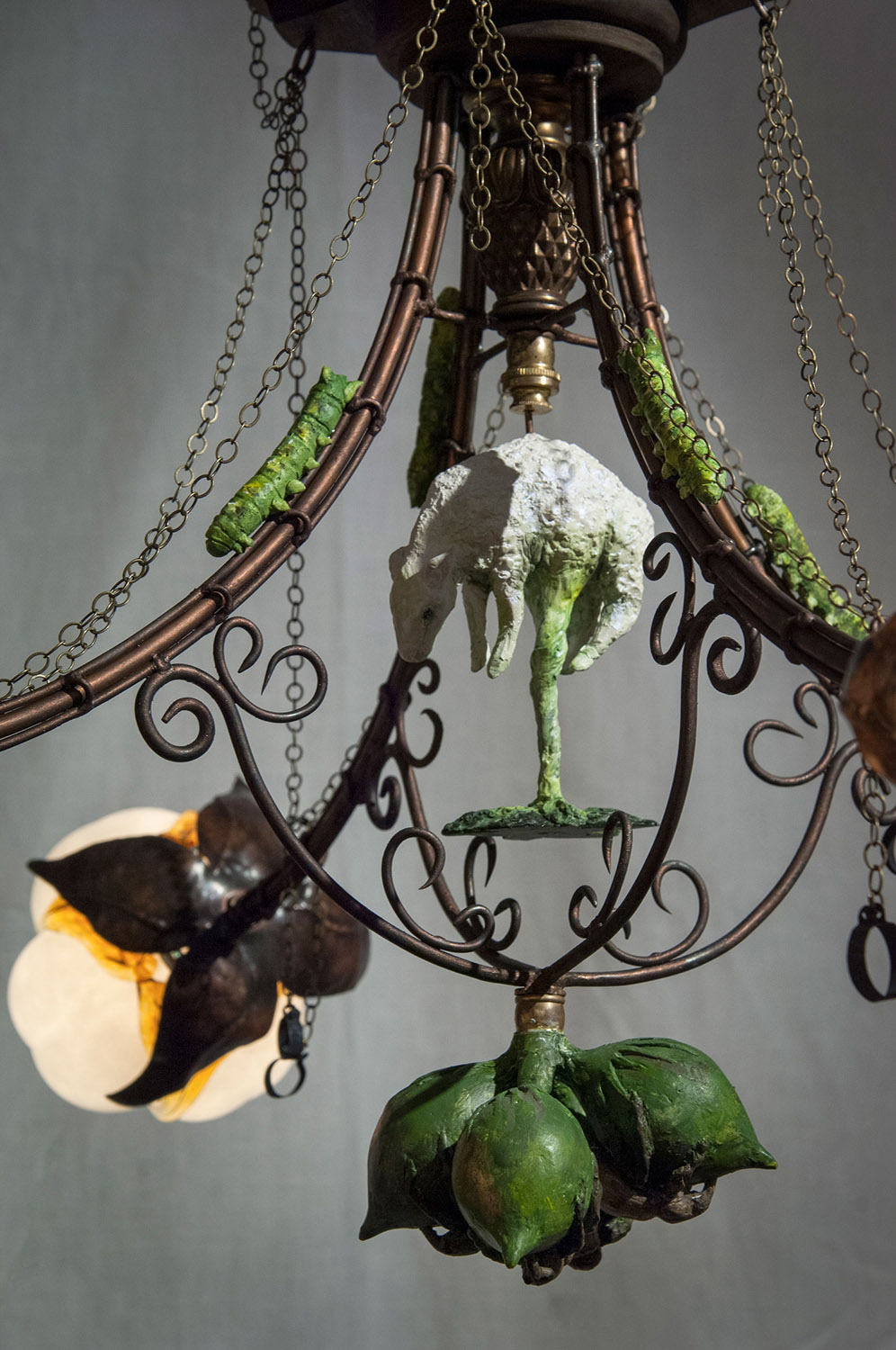






Lloyd Library and Museum presented Wounded Home, an exhibition that took two years of planning, beginning in early autumn 2011, when guest art curator, Kate Kern, was invited to tackle the topic of the Civil War for the 150th Commemorative four-year cycle. The resulting exhibition, Wounded Home, took its inspiration from a Victorian era parlor ravaged by the losses and upheaval of Civil War America. Combining the vocabularies of an iconic household interior, including Victorian customs of mourning and grief, with text and images from the Lloyd’s collection of Civil War resources, each artist created a facet of a poignant and disturbing room-within-a-room in the Lloyd’s gallery space. Artists, Mary Jo Bole, Debbie Brod, Jenny Fine, Saad Ghosn, Celene Hawkins, Kate Kern, and Alice Pixley Young, began meeting regularly in November 2011 and created new works specifically for this exhibition. Lloyd materials used by the artists during their research were also on display, inviting visitors to make connections between the exhibition and the sources of inspiration from the Lloyd’s vast collection.
My role in this exhibit was two-fold: first, as a participating artist, and second as the designer and fabricator of the exhibition space. My business partner, Jarrett Hawkins, and I built a secondary structure to transform the rectangular gallery volume into a more complex, subdivided "domestic" space.
In the Collection of The Lloyd Library and Museum

Welded steel, blown glass, hydrocal, mixed media
42"h x 28"diameter
2013
In the Collection of The Lloyd Library and Museum
"The white man loves to control and loves the person willing to be controlled by him. The negro readily submits to the master hand, admires and even loves it. Left to his own resources and free to act as his mind or emotions dictate, no man can foresay what he is liable to do.” From: Cotton and Cotton Oil, 1901, by D. A. Tompkins, page 47. That Tompkins felt comfortable espousing this in print decades after the Emancipation is deeply disturbing. I wanted to gain a better understanding of how the South’s wealth was built and maintained by the use of slaves. Those who cultivated cotton, and other cash crops, were utterly dependent on the use of slave labor for their success. The comfort in which a privileged group of individuals lived, supported by others existing in abusive and miserable conditions seems very long ago, but its implications are still with us today. I also examined the physical structure of the cotton plant, its pests, diseases, and mythology. The chandelier melds these ideas. It combines various symbols of oppression and suffering into a deceptively innocent domestic object.